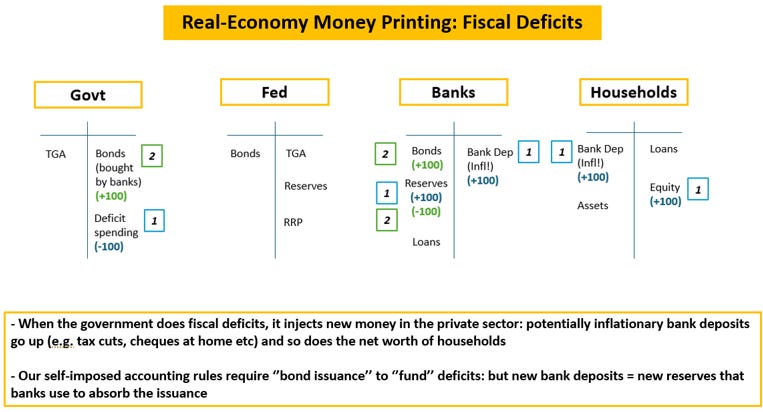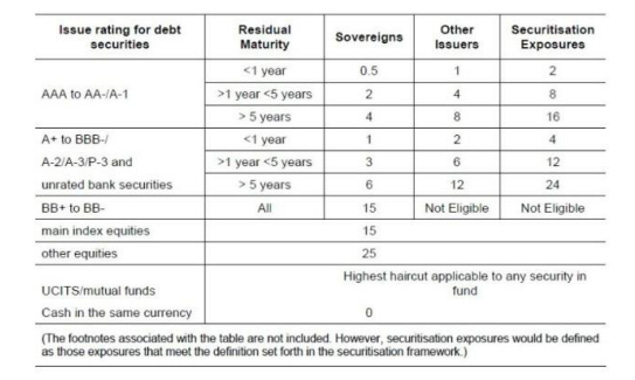SoFi stock falls after announcing $1.5B public offering of common stock
On Friday, the credit agency Moody’s downgraded the US rating by one notch to Aa1 (equivalent to AA+).
By now, you’ve probably read tens of opinion pieces arguing this is the beginning of the end, and that there will be dire consequences for the US Treasury market.
In this piece, you’re going to read a more sober and data-driven approach to this downgrade.
The first thing to understand is why Moody’s downgraded the US: ‘’Successive U.S. administrations and Congress have failed to agree on measures to reverse the trend of large annual fiscal deficits and growing interest cost’’.
The mainstream take here is that this makes sense because the US will never be able to repay its debt and because interest costs have now exceeded $1 trillion per year.
Once you understand the monetary system, both these assertions don’t make any sense:

Any government doing deficit spending and issuing bonds in its own currency (like the US) is not walking into an abyss of doom – it’s just choosing to stimulate the economy by printing money for the private sector.
It doesn’t have to repay anything – if it tries that via budget surpluses it will cause the opposite effect and end up hurting the private sector (via higher taxes).
The process of fiscal deficits creating money for the private sector is explained in the T-Account chart.
Step 1 is the government blowing a hole in its balance sheet to print money for the private sector (aka deficits), which adds net worth for households and corporates which see their net bank deposits increase. These deposits end up at banks, which in turn also see their assets (reserves) increase.
Banks will then swap these reserves for bonds at auctions where the US government funds its deficits via issuing bonds and primary dealers (banks) plus foreign investors show up to buy bonds – step 2.
Ok fine, ‘’US debt levels are too high now’’ is a groundless worry touted by rating agencies and mainstream commentators, but surely paying $1+ trillion in interest costs must be a scary proposition?
Not really: for every $ the US pays for interest on debt, there is an investor making $ on risk-free interest rates she is collecting by owning Treasury bonds.
Repeating this concept is useful to demystify the monetary system: yes, government debt and US interest payments are rising but it’s not like the US needs to ‘’choose’’ between spending on interest and spending money for healthcare – the government balance sheet doesn’t work like ours.
The real limitation to uncontrolled deficit spending is inflation and scarcity of resources (2021-2022 prime example) and not some budget constraints typical of a household.
Ok, but how does the Fitch downgrade affect investors and market participants?
The key point is that US Treasuries are now rated AA+ instead of AAA.
US Treasuries are the most widely used form of collateral in the world due to their high rating, liquidity, deep repo market and solid democratic foundations/rule of law.
Does the downgrade affect that?

Commercial banks are huge buyers of Treasuries: they use them as regulatory liquid assets (HQLA), as collateral and also sometimes as an asset to hedge interest rate risk on their liabilities.
The Basel regulatory framework introduced 10 years ago has 0% capital requirements for government bonds rated between AAA and AA- for its standardized approach: the downgrade to AA+ wouldn’t make any difference. Most banks actually choose an internal-rating-based (IRB) approach based on internal models and in that case most jurisdictions apply an exception for any investment-grade rated domestic government bond which automatically assigns them a 0% risk weight.
Bottom line: for banks this downgrade makes no difference at all.
Treasuries are also widely used as collateral in repo transactions: for instance, pension funds and insurance companies lend their unsecured cash parked at a bank against collateral to upgrade the safety of their ‘’cash’’ deposits in a so-called reverse repo transaction.
A secured loan with UST as collateral (e.g. reverse repo) is safer than parking cash unsecured at a bank.
Does a downgrade affect the collateral status of US Treasuries?

The table above shows the Basel committee recommended haircuts for repo transactions.
As you can see, bonds rated between AAA and AA- fall in the same bucket (little haircut required).
The Moody’s downgrade doesn’t affect the role of US Treasuries in the financial plumbing world: banks still face 0% risk-weights when buying Treasuries, and the role of US bonds as the main collateral underlying the global repo market remains intact.
People will now try to compare the short-term bond market reaction to 2011, the last time when US Treasuries received a surprise and significant rating downgrade. Yet, the comparison makes no sense.
Remember that 10-year government bond yields can be decomposed as:

The downgrade can only directly impact the third component – term premium, which measures the compensation investors demand for various uncertainties attached to owning long-dated US Treasuries (generally growth and inflation volatility, but occasionally also other type of uncertainties).
We have shown how the downgrade doesn’t affect the role of US Treasuries in the global plumbing system, hence unless investors initiate a self-fulfilling fire-sale there shouldn’t be much impact from Moody’s action.
Yet, Moody’s is right on one thing: persistent primary deficits (3%+/year and growing) do require a different approach to bond markets than we had during the 2012-2019 period.
If you check the simple equation above, you will see that fiscal stimulus serves as a boost for cyclical growth which turns growth expectations higher – or alternatively, it limits the extent of economic weakness.
By constantly creating money for the private sector at a sustained pace, 3%+ primary deficits also contribute to stickier inflation – hence also affecting the second part of our equation.
The Fed still believes the neutral nominal rate (the rate at which the economy doesn’t cool off or overheats) sits at 3%, but it’s fair to assume that persistent fiscal deficits combined with a de-leveraged US private sector have pushed it higher. The bond market instead prices the US neutral rate at 3.50%, and it maintains a steep curve in the 10-30 year area as investor demand compensation to own long-end bonds.
Bonds are fairly priced here. I would start accumulating more 30-year Treasuries >5.25%.
Disclaimer: This article was originally published on The Macro (BCBA:BMAm) Compass. Come join this vibrant community of macro investors, asset allocators and hedge funds - check out which subscription tier suits you the most using this link.
